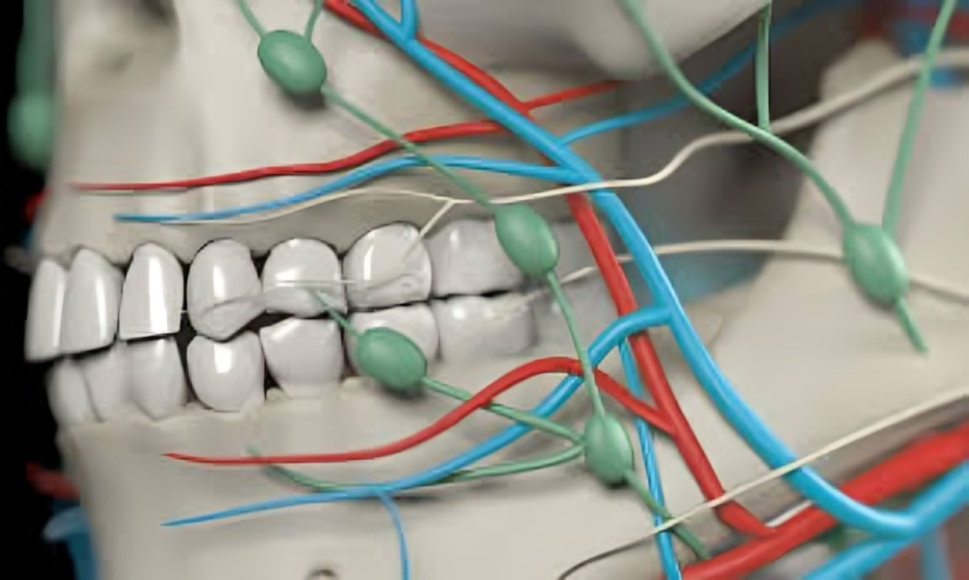Teeth and bones are two fundamental structures in the human body that share certain similarities yet possess distinct differences. At first glance, teeth may seem like bones due to their hard, white appearance and their role in the skeletal system. However, a closer examination reveals unique characteristics that set teeth apart from bones. This article delves into the anatomy, composition, function, and health of teeth and bones to clarify their similarities and differences, answering the question: are teeth bones?
Anatomical Overview: Are Teeth Bones

The Anatomy of Teeth
Are Teeth Bones complex structures located in the oral cavity, primarily designed for mechanical digestion. An adult human typically has 32 permanent teeth, which are categorized into incisors, canines, premolars, and molars. Each type of tooth has a specific function, such as cutting, tearing, or grinding food.
The anatomy of a tooth consists of several parts:
- Enamel: The hard, outermost layer that protects the tooth. Enamel is the hardest substance in the human body.
- Dentin: The layer beneath the enamel, which is also hard but less so than enamel. It supports the enamel and carries nerve fibers.
- Pulp: The innermost part of the tooth containing nerves and blood vessels. The pulp is vital for the tooth’s sensory function and nutrient supply.
- Cementum: A calcified layer covering the tooth’s root, helping to anchor it within the jawbone.
- Periodontal Ligament: The connective tissue that holds the tooth in place within the jawbone.
The Anatomy of Bones
Bones are rigid organs that form the endoskeleton of vertebrates. The human skeleton is made up of 206 bones, providing structure, protection for vital organs, and support for movement. Bones are categorized based on their shapes and functions: long bones (e.g., femur), short bones (e.g., carpals), flat bones (e.g., skull), and irregular bones (e.g., vertebrae).
The structure of bones consists of several parts:
- Periosteum: A dense layer of vascular connective tissue enveloping the bones except at the surfaces of the joints.
- Compact Bone: The dense, hard outer layer of the bone that provides strength and protection.
- Spongy Bone (Cancellous Bone): The porous, less dense inner layer that houses bone marrow.
- Bone Marrow: The soft tissue found in the hollow interior of bones, responsible for producing blood cells.
- Endosteum: A thin vascular membrane lining the inner surface of the bony tissue.
Composition: What Are They Made Of?
Composition of Teeth
Teeth are composed of several materials, each contributing to their overall structure and function:
- Enamel: Made primarily of hydroxyapatite (a crystalline calcium phosphate), enamel is incredibly hard and durable.
- Dentin: Contains a mix of hydroxyapatite, water, and collagen, making it slightly softer than enamel but still very strong.
- Pulp: Composed of connective tissue, nerves, and blood vessels, the pulp is crucial for the vitality of the tooth.
- Cementum: Similar to bone in composition, cementum is made of hydroxyapatite and collagen, providing a medium for the attachment of the periodontal ligament.
Composition of Bones
Bones are also made up of various materials that give them strength and resilience:
- Collagen: A protein that provides a soft framework.
- Hydroxyapatite: A mineral that hardens the framework, giving bones their rigidity.
- Bone Marrow: Contains hematopoietic (blood-forming) and stromal (supportive) tissues.
The combination of collagen and hydroxyapatite in bones allows them to be strong yet flexible enough to absorb stress.
Development: How Do They Form?
Development of Teeth
Tooth development, or odontogenesis, begins in the embryonic stage and continues into adolescence. The process involves several stages:
- Initiation Stage: Formation of the dental lamina, a band of epithelial tissue that gives rise to tooth buds.
- Bud Stage: The dental lamina forms rounded, localized growths known as tooth buds.
- Cap Stage: Tooth buds grow and form a cap-like structure around the developing tooth’s inner tissues.
- Bell Stage: Differentiation of cells leads to the formation of enamel, dentin, and pulp.
- Crown and Root Formation: The tooth crown is formed first, followed by the root, which continues to develop even after the tooth erupts.
Development of Bones
Bone development, or ossification, occurs through two primary processes:
- Intramembranous Ossification forms flat bones, such as those in the skull. Mesenchymal cells differentiate into osteoblasts, which then produce bone matrix.
- Endochondral Ossification: This process forms long bones, such as the femur. A cartilage model is first formed, which is gradually replaced by bone tissue.
Both processes involve the transformation of pre-existing tissues into bone, with osteoblasts playing a crucial role in producing the bone matrix and osteoclasts aiding in bone remodeling.
Function: What Do They Do?
Functions of Teeth
Teeth play several essential roles in the human body:
- Mechanical Digestion: Teeth break down food into smaller pieces, making it easier to digest.
- Speech: Teeth help in forming certain sounds, contributing to clear speech.
- Aesthetics: Teeth contribute to facial structure and appearance.
Functions of Bones
Bones serve multiple critical functions:
- Support: Bones provide a framework that supports the body and cradles soft organs.
- Protection: Bones protect vital organs; for example, the skull protects the brain, and the ribcage shields the heart and lungs.
- Movement: Bones act as levers that muscles pull on to produce movement.
- Mineral Storage: Bones store minerals, such as calcium and phosphorus, which can be released into the bloodstream as needed.
- Blood Cell Production: Bone marrow produces red blood cells, white blood cells, and platelets.
Health and Diseases: How Are They Maintained?
Dental Health
Maintaining dental health involves regular care to prevent tooth decay and gum disease:
- Brushing and Flossing: Removing plaque and food particles to prevent cavities and periodontal disease.
- Diet: Limiting sugary foods and drinks that can contribute to tooth decay.
- Regular Dental Check-ups: Professional cleanings and examinations to detect and treat dental issues early.
Common dental diseases include:
- Cavities (Dental Caries): Caused by bacterial activity that demineralizes tooth enamel.
- Gingivitis and Periodontitis: Inflammatory conditions affecting the gums and supporting structures of the teeth.
- Tooth Sensitivity: Caused by exposed dentin or enamel erosion.
Bone Health
Maintaining bone health involves ensuring adequate nutrition, exercise, and preventive care:
- Calcium and Vitamin D: Essential for bone strength and health.
- Weight-bearing Exercise: Stimulates bone formation and strength.
- Avoiding Smoking and Excessive Alcohol: Both can weaken bones.
Common bone diseases include:
- Osteoporosis: A condition where bones become weak and brittle due to loss of bone density.
- Osteoarthritis: A degenerative joint disease that affects cartilage and bone.
- Fractures: Breaks in bones that can result from trauma or weakened bone structure.
Differences Between Teeth and Bones
Despite their similarities, teeth and bones have distinct differences:
Structural Differences
- Enamel vs. Bone Matrix: Enamel is much harder and more mineralized than bone. While bones have a higher collagen content, teeth have a greater proportion of hydroxyapatite.
- Regeneration: Bones can heal and remodel themselves throughout life, whereas enamel does not regenerate once it is lost. Damage to enamel is permanent and must be treated with dental procedures.
Developmental Differences
- Formation Process: Teeth develop through a process called odontogenesis, which involves the formation of dental tissues from the dental lamina. Bones form through ossification, either intramembranous or endochondral.
- Cell Types: Odontoblasts are specialized cells that form dentin in teeth, while osteoblasts and osteoclasts are responsible for bone formation and resorption, respectively.
Functional Differences
- Primary Function: Teeth are primarily involved in the mechanical digestion of food and speech, while bones provide structural support, protection, and facilitate movement.
- Cellular Activity: Teeth do not undergo the same constant cellular turnover as bones. Bone tissue is dynamic, with continuous remodeling throughout a person’s life.
Similarities Between Teeth and Bones
While teeth and bones have notable differences, they also share several similarities:
- Mineral Composition: Both teeth and bones are composed primarily of hydroxyapatite, giving them their hardness and durability.
- Supportive Role: Both structures support bodily functions—teeth in chewing and bones in providing a framework for the body.
- Susceptibility to Disease: Both teeth and bones can be affected by diseases that impact their structure and function, such as cavities and osteoporosis.
FAQs
Are teeth considered bones?
While they share some similarities, such as their hard structure and mineral composition, Are Teeth Bones have distinct differences in their anatomy, development, and function.
What are the main structural differences between teeth and bones?
- Enamel vs. Bone Matrix: Enamel, the outermost layer of teeth, is much harder and more mineralized than bone. Bones, rich in collagen, are flexible, while enamel, mainly hydroxyapatite, is extremely hard.
- Regeneration: Bones can heal and remodel themselves throughout life, while enamel cannot regenerate once it is lost.
How do teeth and bones develop differently?
- Teeth: Teeth develop through a process called odontogenesis, which involves the formation of dental tissues from the dental lamina.
- Bones: Bones form through ossification, which can be intramembranous (formation of flat bones like the skull) or endochondral (formation of long bones like the femur).
What are the functions of teeth and bones?
- Teeth: Primarily involved in mechanical digestion (chewing food) and speech.
- Bones: Provide structural support, protect vital organs, facilitate movement, store minerals, and produce blood cells.
What materials compose teeth and bones?
- Teeth: Composed of enamel (hydroxyapatite), dentin (hydroxyapatite, water, and collagen), pulp (connective tissue, nerves, and blood vessels), and cementum (similar to bone in composition).
- Bones: Made of collagen (providing a soft framework) and hydroxyapatite (hardening the framework). Bone marrow inside bones produces blood cells.
Conclusion
While Are Teeth Bones share some compositional and functional similarities, they are fundamentally different structures. Teeth chew and aid speech, featuring enamel and lacking regenerative capability, with unique characteristics. Bones support the body, protect organs, facilitate movement, and can regenerate and remodel themselves.
Understanding the differences and similarities between teeth and bones is crucial for appreciating the complexity of the human body and the specialized roles these structures play. By maintaining good dental and bone health through proper nutrition, hygiene, and regular medical care, we can ensure the longevity and functionality of these essential components of our anatomy.



